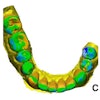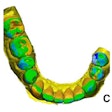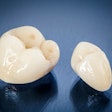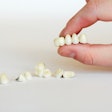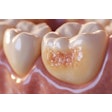The longevity of dental restorations may be affected by the number of tooth surfaces covered, the type of filler material used, and patient psychological factors, according to a study recently published in Dental Materials.
Furthermore, eating disorders, dry mouth, and dental anxiety appear to negatively affect restorations, the authors wrote.
“This study investigated the influence of material type and other factors on the longevity of direct resin-based composites (RBCs) restorations,” wrote the authors, led by Akimasa Tsujimoto of the Aichi Gakuin University School of Dentistry in Japan (Dent Mater, August 8, 2025).
The retrospective cohort study analyzed 15 years of electronic dental records from adult patients in the U.S. Restorations were included if they were direct RBC restorations placed between July 2008 and September 2023. The analysis focused on individual restorations rather than patients, allowing multiple restorations per patient, they wrote.
If more than one restoration was placed in the same tooth during the study period, only the earliest one was analyzed as the index restoration. Survival time was measured from the date of placement to the date of failure, and potential predictor variables were obtained from the electronic records.
Restoration size was a major factor, with longevity decreasing as the number of covered surfaces increased (hazard ratio [HR]: 2.49, confidence interval [CI]: 1.97 to 3.15, p < 0.001 for four surfaces). While more surfaces led to shorter lifespans, having a proximal surface did not significantly affect outcomes, they wrote.
Additionally, the filler type influenced survival, with supra-nano spherical filler performing better than conventional filler (HR: 0.61, CI: 0.45 to 0.82, p = 0.001).
Moreover, eating disorders (HR: 1.72, CI: 1.15 to 2.56, p = 0.008), dry mouth (HR: 1.20, CI: 1.02 to 1.43, p = 0.033), and dental fear (HR: 1.39, CI: 1.14 to 1.69, p = 0.001) were all linked to reduced longevity.
The study, however, had limitations. Due to its retrospective design, the study identified associations between variables but could not establish causal relationships, the authors added.
“Further research is needed to determine how these factors affect restoration longevity, and why some do not,” they concluded.




